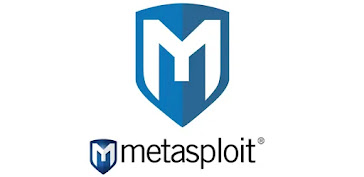Reconnaissance, the process of gathering information about a target system or network, is a crucial phase in cybersecurity assessments. Automated reconnaissance tools play a pivotal role in this process, allowing security professionals to gather data efficiently and effectively. In this blog post, we'll explore the top 10 automated reconnaissance tools that every cybersecurity professional should have in their arsenal.
Recon-ng is a full-featured web reconnaissance
framework written in Python. It provides a powerful interface for conducting
reconnaissance on web applications and services. Recon-ng supports a wide range
of modules for tasks such as information gathering, vulnerability scanning, and
data harvesting from various sources.
theHarvester is a popular OSINT (Open Source
Intelligence) tool used for gathering email accounts, subdomains, hosts,
employee names, open ports, and banners from different public sources like
search engines, PGP key servers, and SHODAN. It is commonly used by penetration
testers and security researchers to gather information about their targets.
Metasploit is a well-known exploitation framework, but
it also includes features for conducting automated reconnaissance. With
Metasploit, security professionals can perform tasks such as scanning for open
ports, fingerprinting services, and gathering information about targets.
Metasploit's extensive database of exploits and payloads can also be leveraged
during reconnaissance.
SpiderFoot is an open-source intelligence (OSINT)
automation tool that enables users to collect data from various sources for
reconnaissance purposes. It automates the process of gathering information
about people, organizations, and networks from sources such as search engines,
social media platforms, and public databases.
Shodan is often referred to as the "search engine
for Internet-connected devices." It allows users to search for and explore
various services and devices on the Internet, including webcams, routers,
servers, and more. Shodan can be used for reconnaissance to discover vulnerable
or misconfigured devices exposed to the Internet.
Maltego is a comprehensive OSINT and graphical link
analysis tool that allows users to gather and visualize information about
people, organizations, and networks. It provides a user-friendly interface for
conducting reconnaissance and mapping relationships between different entities.
EyeWitness is a reconnaissance tool designed to take
screenshots of websites, services running on ports, and open-source
intelligence gathering. It automates the process of capturing visual evidence
of web applications and services, making it useful for reconnaissance and
reporting purposes.
Sublist3r is a Python tool designed to enumerate
subdomains of websites using various search engines. It automates the process
of gathering subdomain information, which can be valuable for reconnaissance
and identifying potential attack vectors.
Gobuster is a tool used for directory and file
brute-forcing during reconnaissance and enumeration phases. It automates the
process of discovering hidden directories and files on web servers, which can
reveal valuable information about a target's web application architecture.
Conclusion
Automated reconnaissance tools are essential for
efficiently gathering information about target systems and networks during
cybersecurity assessments. The top 10 tools listed in this blog post provide a
comprehensive set of features for conducting reconnaissance tasks, ranging from
network scanning to OSINT gathering. By leveraging these tools, security
professionals can enhance their reconnaissance capabilities and better
understand their targets' attack surface.
Whether you're a penetration tester, security researcher, or cybersecurity enthusiast, having a solid understanding of these automated reconnaissance tools is essential for success in the field of cybersecurity. Incorporate these tools into your toolkit and take your reconnaissance game to the next level!

.webp)







